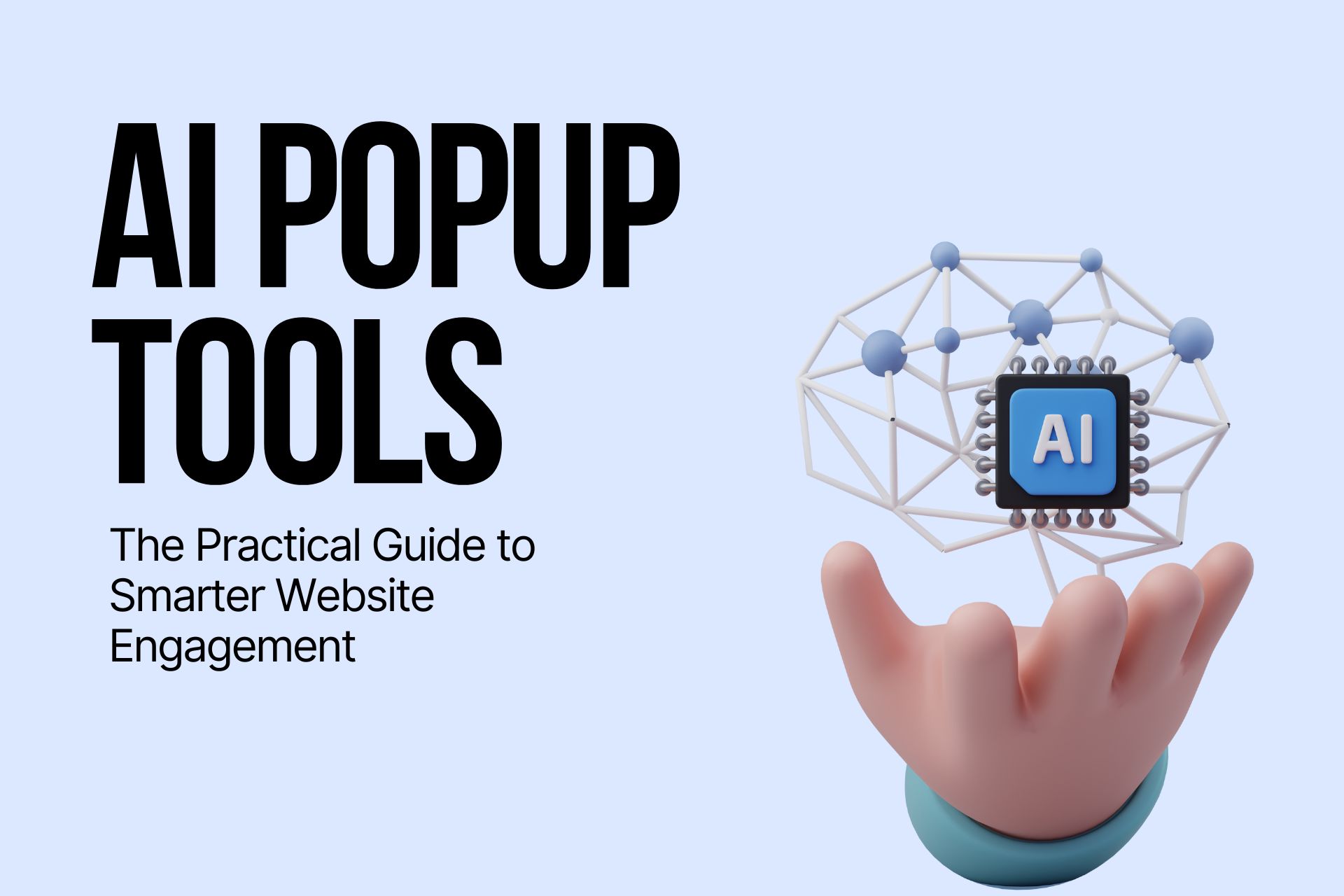Quick Summary by Popupsmart
AI popup tools are transforming how websites engage visitors by delivering personalized, data-driven experiences. With Popupsmart, you can create an AI-powered popup in just minutes; simply enter a prompt, and the system generates design, copy, and targeting for you. I’ll also share how features like Smart Mode, A/B testing, and behavioral targeting help optimize conversions. Along the way, I’ll compare Popupsmart with other tools like Justuno, HelloBar and Privy. By the end, you’ll know exactly how to pick the right AI popup solution and use it to boost engagement and sales.
What Are AI Popup Tools and How Do They Work?
When I first heard the phrase AI popup tools, I thought it was just another marketing buzzword. But after using them, I realized they’re much more than “just popups.” Essentially, these are popup builders enhanced with artificial intelligence—which means they don’t just sit on your site waiting to annoy people. Instead, they actively learn from visitor behavior, adapt messaging in real time, and make smarter decisions than traditional, rule-based popups ever could.
How do AI-powered popups differ from rule-based popups?
Traditional popups usually rely on rigid triggers—show after 5 seconds, show on exit intent, or show on mobile only. While those rules can be useful, they’re not exactly “smart.” AI-powered popups, on the other hand, analyze data points like:
- visitor scroll depth,
- time spent on page,
- referral source,
- previous interactions,
- even cart behavior in eCommerce.
This means the popup can decide the perfect moment to appear and what kind of message will resonate most. I’ve seen cases where AI-powered popups reduced bounce rates simply by timing themselves better than any static rule could.
Stat Alert: According to VWO, by 2025, around 30% of companies are likely to use AI to enhance their testing processes, up from just 5% in 2025.
This shift reflects how AI-enabled testing—like optimizing popup timing, messaging, and design—is moving from novelty to norm.
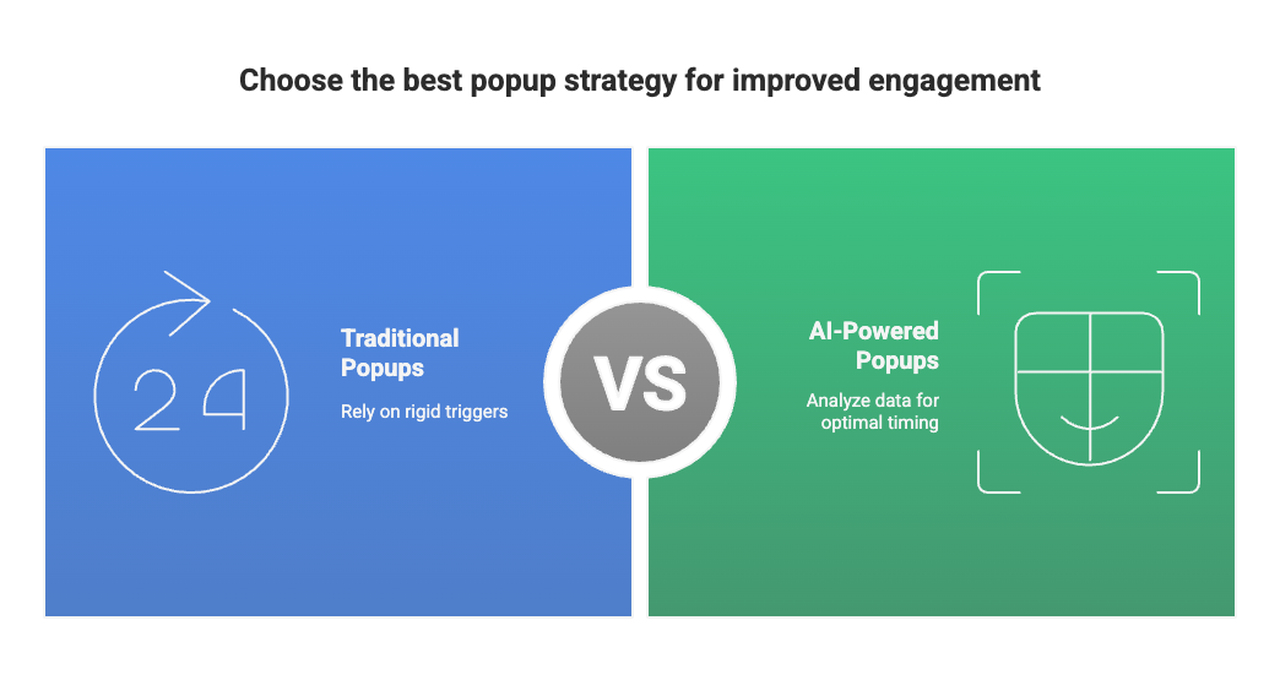
Which data signals power AI-driven personalization on-site?
In my opinion, it comes down to two things: personalization and efficiency. Businesses don’t want to waste time managing dozens of different popup rules, and visitors don’t want to see irrelevant offers. AI solves both problems at once.
For example, if a new visitor comes to your homepage, the popup might highlight a welcome discount. But if a returning customer is about to abandon their cart, the AI might instantly switch to a free shipping reminder. All of this happens automatically, which is why I think so many companies are moving toward AI website engagement.
How Do AI Popup Tools Improve Conversions Across the Funnel?
I’ll be honest—when I first tested AI popups, I wasn’t expecting them to move the needle much. But the data surprised me. What I’ve learned is that AI popup tools can impact every stage of the funnel, from awareness to conversion.
Why does conversion optimization with AI reduce bounce and abandonment?
Think about the moment when someone is about to leave your site. A traditional popup might randomly throw in a discount, but an AI-driven one looks at the visitor’s intent. Are they scrolling quickly? Have they added items to the cart but hesitated at checkout? AI can predict these signals and show a relevant offer at the exact right moment.
For example, I once set up an AI-powered exit-intent popup for an eCommerce site. Instead of showing the same coupon to everyone, the AI only triggered the discount for people who had items in their cart above a certain value. The result? A higher average order value and fewer abandoned carts.
How do AI marketing tools connect to email, CRM, and analytics stacks?
Another thing I really like about AI popup tools is how seamlessly they integrate with the rest of your marketing ecosystem. Popups are often the first point of contact—someone drops their email, phone number, or even a product preference. AI makes sure that data doesn’t just sit there.
With integrations into email providers, CRMs, and analytics platforms, AI can enrich your data and personalize follow-up campaigns. For example, if a visitor signs up through an AI-driven popup that promises “eco-friendly tips,” your CRM can tag them as sustainability-focused. Later, your email marketing can send them tailored offers.
In my view, that’s the real power of AI here: it doesn’t just get the conversion; it feeds the entire marketing engine with smarter, more relevant data.
How to Create an AI Popup with Popupsmart (Step-by-Step Guide)
Step 1 – Start the AI Popup Builder
Go to popupsmart.com → click AI Popup Builder → “Create Your AI Popup Now”. No coding is required, just log in or sign up.
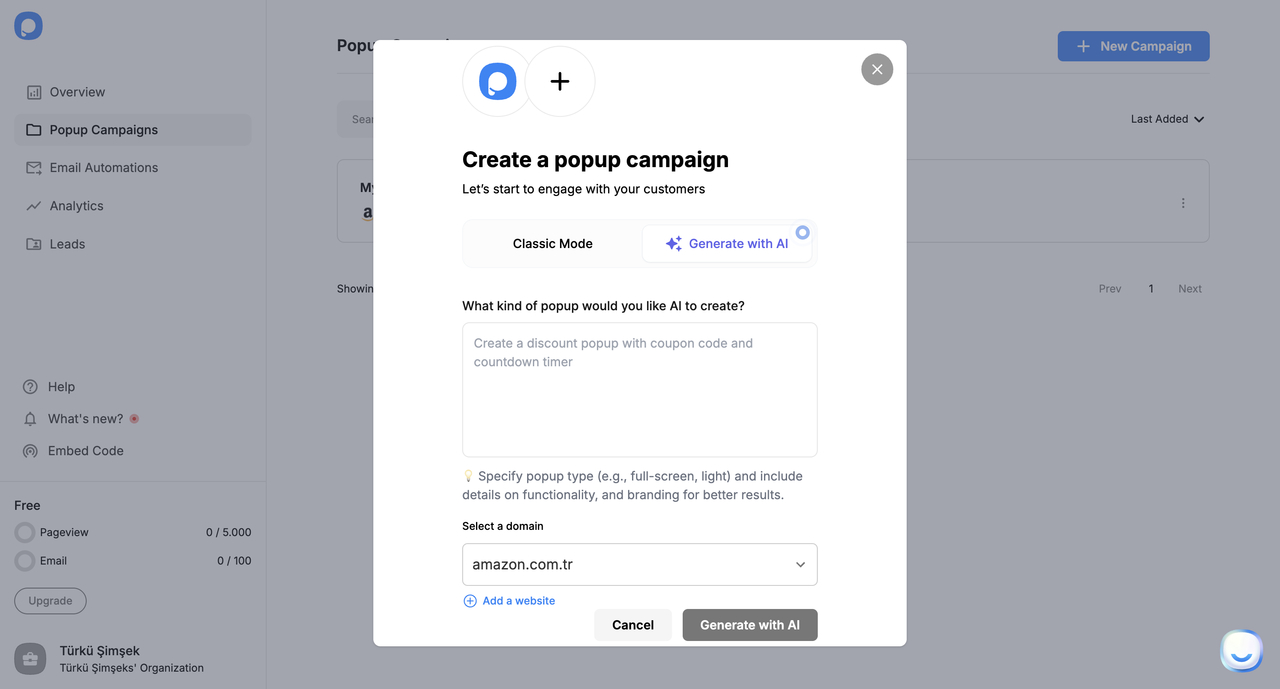
Step 2 – Generate Your Popup with AI
Type a single prompt (e.g., “Collect emails with 10% discount, show on exit intent”). Popupsmart’s AI instantly builds a ready-to-use popup with layout, copy, and visuals.
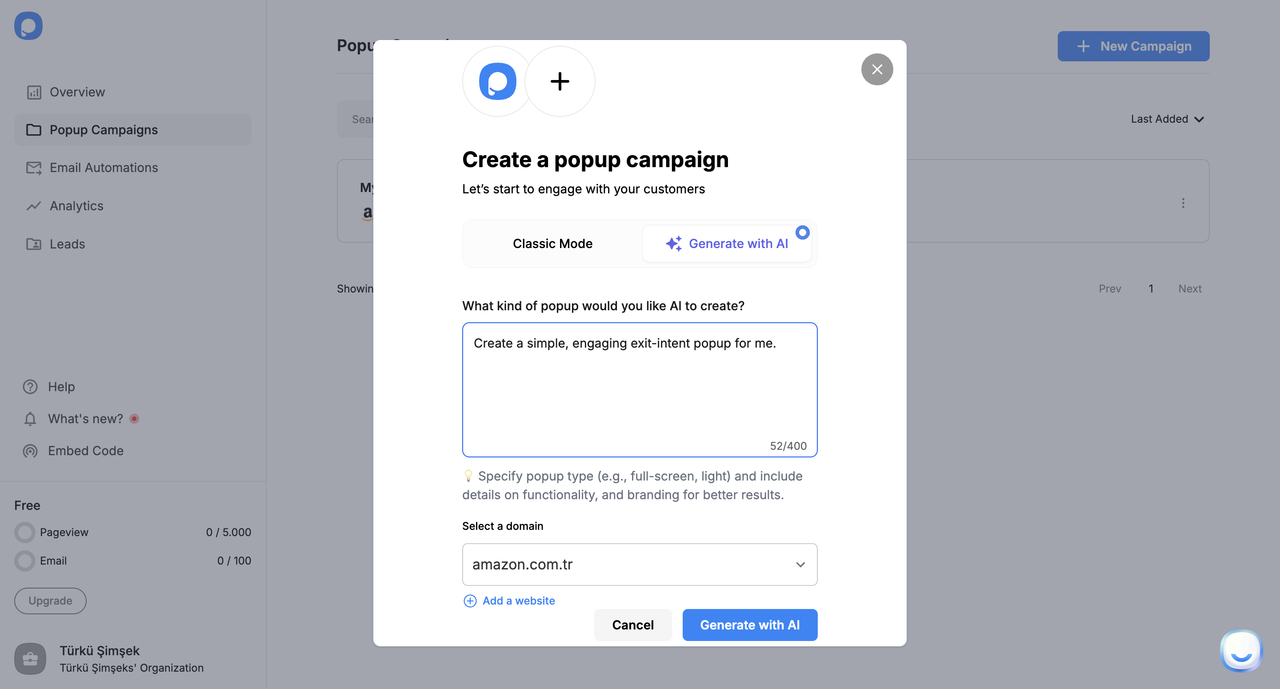
Step 3 – Customize Content & Design
Refine the headline, text, and images using AI suggestions. Adjust layout, colors, and add form fields if needed. You can even use AI to generate icons or visuals.

Step 4 – Set Targeting & Display Rules
Choose Smart Mode Targeting (AI auto-optimizes who sees your popup) or set manual rules like traffic source, device, page URL, or exit intent. This ensures your popup shows at the right time to the right visitor.
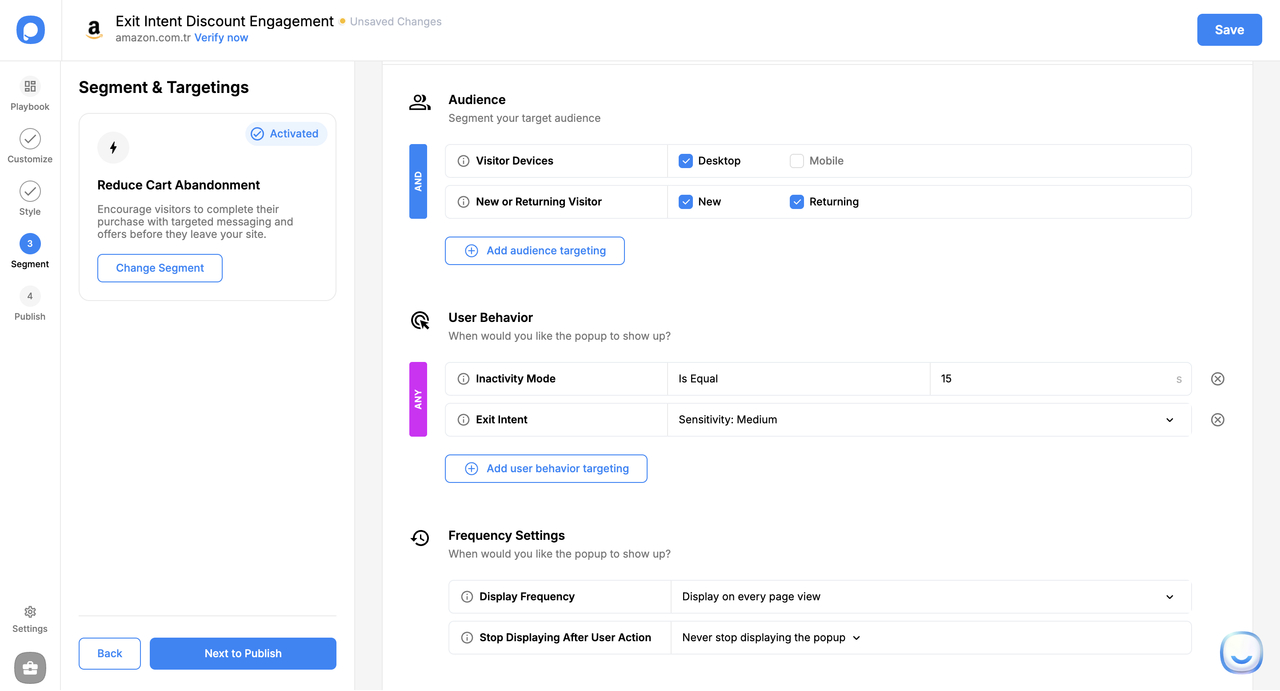
Step 5 – Publish & Track Results
Click Publish, and your popup goes live. Use the dashboard to monitor conversions, run A/B tests, and let AI continuously optimize performance.

Which AI Popup Tools Should You Consider in 2025?
When I started exploring AI popup tools, I quickly realized the market is getting crowded. Everyone claims they have the “best” AI features—but in my experience, not all tools are created equal. So let me break down the top options I’ve tested or researched:
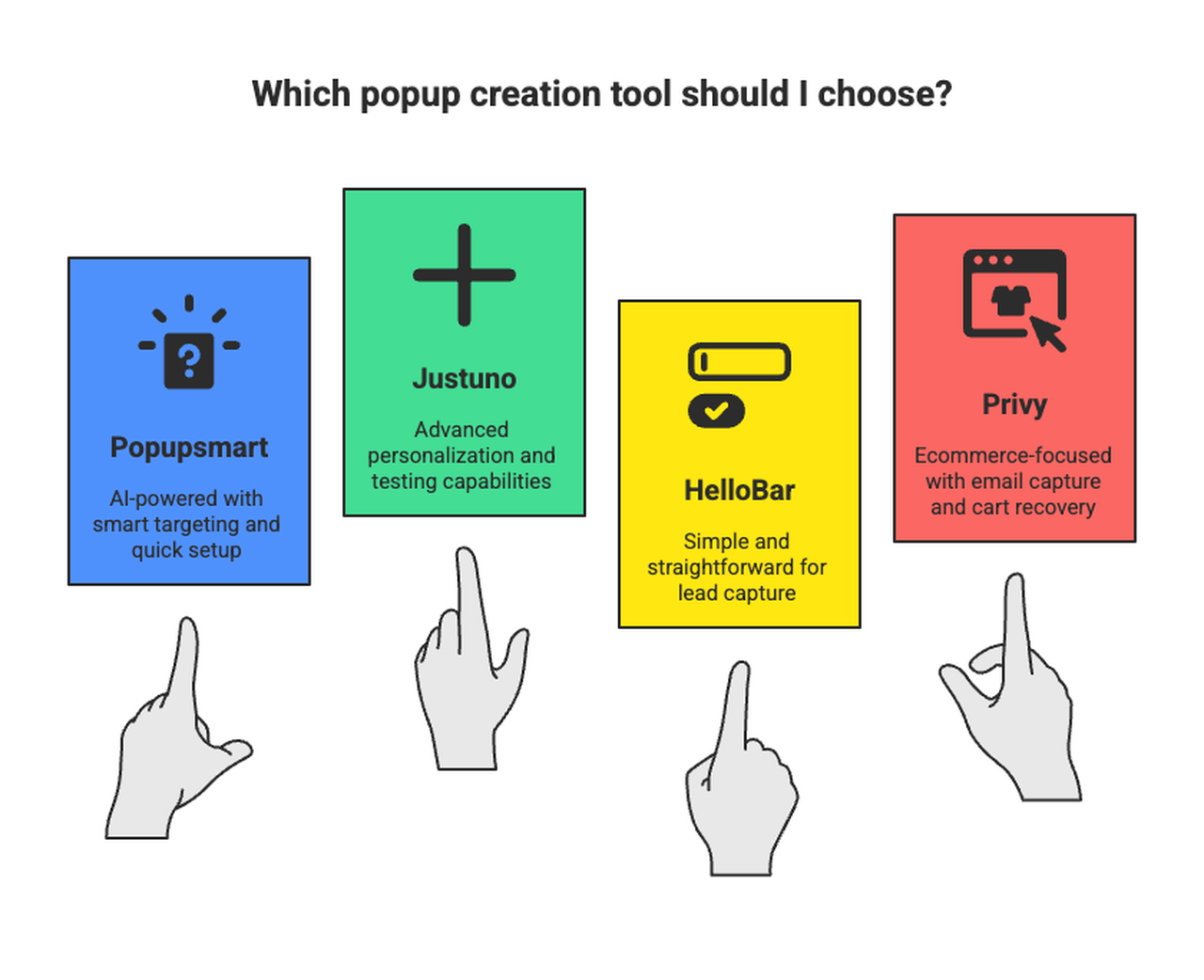
1. Popupsmart
- AI-powered popup creation with a single prompt (copy, images, targeting included)
- Smart Mode Targeting automatically selects the right audience and timing
- Flexible targeting dashboard for detailed customization
- Quick setup from idea to live popup
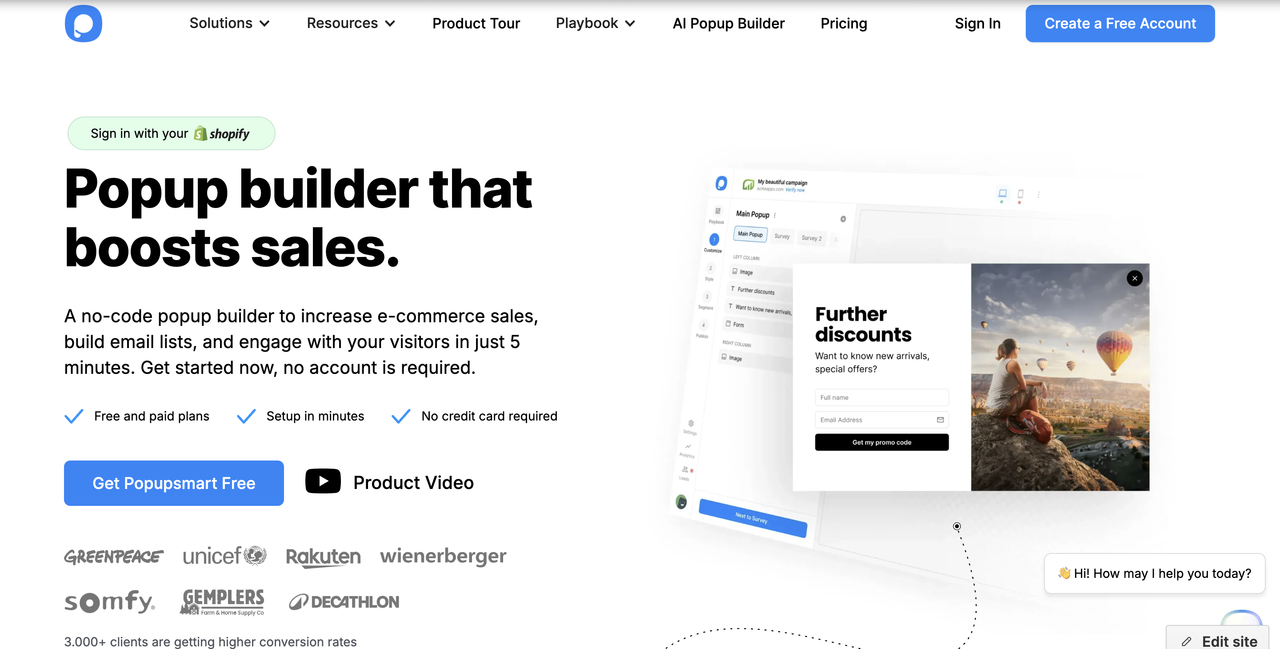
2. Justuno
- A conversion optimization platform with advanced segmentation features
- Offers AI-driven personalization and testing capabilities
- Wide range of design and display options
- Suitable for businesses with complex marketing needs

3. HelloBar
- Simple tool for creating notification bars and popups
- Focused on lead capture and basic audience engagement
- Easy setup process with lightweight customization
- Well-known for its straightforward functionality
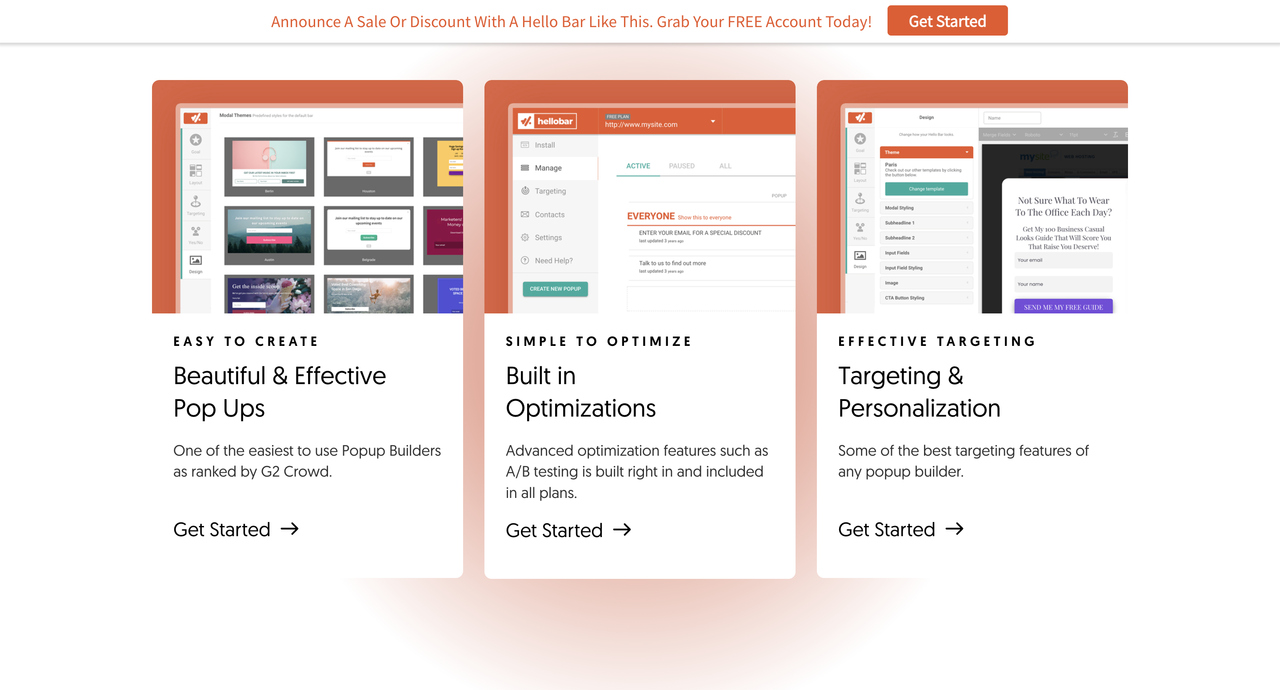
4. Privy
- Designed primarily for ecommerce and Shopify stores
- Strong features for email capture and cart abandonment recovery
- Provides templates optimized for online retail
- User-friendly interface tailored for store owners
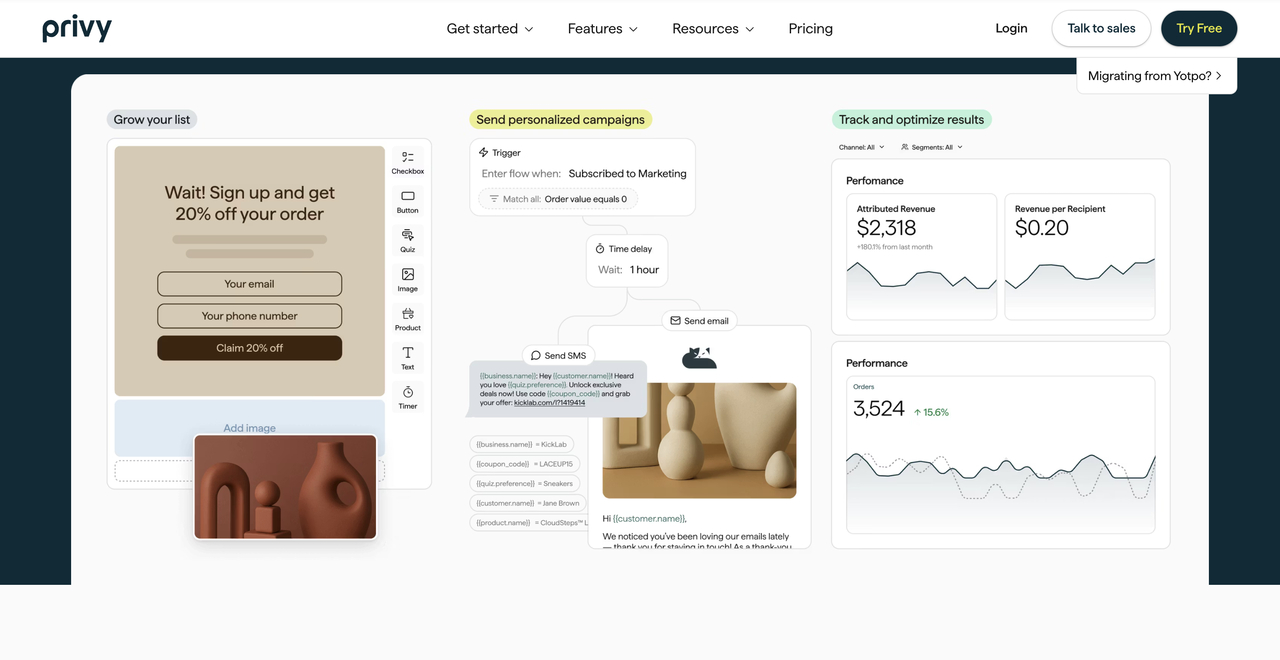
Why Should You Choose Popupsmart?
After looking at these options, my top recommendation is Popupsmart. Here’s why:
- Truly AI-driven: While others offer useful features, Popupsmart stands out with its ability to design, target, and launch popups almost instantly through AI.
- Balance of automation and control: You can let the AI handle everything, or step in and fine-tune every detail—something not all tools manage effectively.
- Speed to launch: Going from idea to live popup only takes minutes, which makes it ideal for fast-moving teams.
- Future-focused: Popupsmart continues to evolve with advanced targeting and personalization features, ensuring it won’t feel outdated anytime soon.
In my experience, if you want a popup solution that combines intelligence, speed, and flexibility, Popupsmart is the clear choice in 2025.
How to Choose the Right AI Popup Tool for Your Business?
When I talk to marketers or founders about AI popup tools, the first question I usually get is: “Okay, but how do I know which one is right for me?” I get it—there are dozens of tools out there, and they all promise higher conversions. From my own experience, the trick is to focus on a few practical factors.
What features, integrations, and pricing models should I prioritize?
For me, the number one factor is ease of use. If a tool makes me spend hours just to create one popup, it’s a deal-breaker. That’s why I lean toward Popupsmart—it lets me launch campaigns in minutes without touching code.
Second, I’d say check the integrations. If your popups can’t talk to your email service provider, CRM, or analytics tools, then you’re missing half the value. For example, I once ran a campaign where new leads went directly from the popup into email automation. Without that integration, the workflow would’ve been a nightmare.
Finally, look at pricing models. Some tools lock their best features behind expensive enterprise plans. In my opinion, it’s better to start with a tool that gives you AI capabilities upfront, without forcing you into a premium tier right away.
Should startups and enterprises evaluate differently?
Yes, absolutely. When I was consulting for a small startup, their priority was speed and simplicity. They just wanted to capture leads and validate ideas quickly, so a lightweight AI popup tool was perfect.
On the other hand, when I worked with a larger company, their concerns were different: scalability, compliance, and advanced segmentation. They wanted AI features, but they also needed role-based access, integrations with enterprise CRMs, and detailed reporting.
So here’s my take:
- If you’re a startup or SMB, look for an AI popup tool that’s plug-and-play, affordable, and easy to launch.
- If you’re an enterprise, make sure the tool offers deeper integrations, data privacy options, and customizable workflows.
At the end of the day, I think the “right” tool is the one that doesn’t just promise AI—but actually makes your marketing easier and more effective.
What Best Practices Make AI-Powered Popups Helpful (Not Annoying)?
I’ll be honest—popups can be annoying if you get them wrong. I’ve seen plenty of websites that just throw popups at visitors every five seconds, and honestly, it makes me leave. But AI popups give us a chance to do it right. Here’s what I’ve learned works best.
How do I use frequency capping, delays, and mobile-safe layouts?
One of my first lessons was about timing. Just because AI can trigger popups doesn’t mean it should hit every visitor immediately. I usually set:
- Frequency capping – so the same visitor doesn’t see the popup more than once or twice.
- Delays – I like popups to appear after 5–10 seconds, or based on scroll depth, not immediately.
- Mobile-friendly layouts – nothing kills engagement faster than a popup that covers the whole screen on mobile.
By using these simple adjustments, I’ve seen much higher engagement rates without annoying visitors.
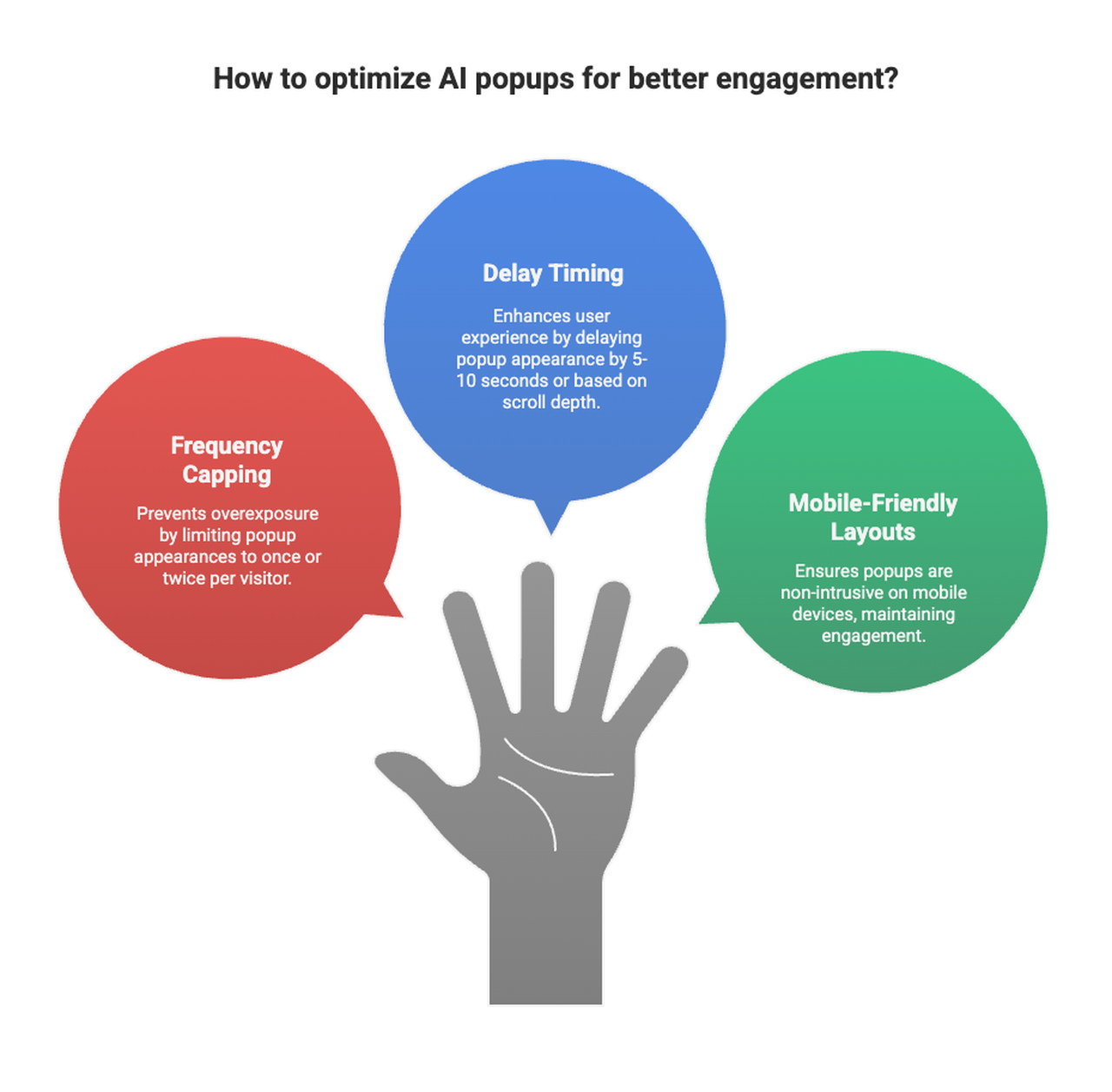
How do I craft value-focused offers and microcopy with AI assistance?
Another thing I’ve learned is that value matters more than cleverness. AI can generate multiple headlines and copy variations for you, but I always choose the ones that clearly explain the benefit. For example: “Get 10% off your first order” is better than a vague “Don’t miss out!”.
I also use AI to create microcopy; tiny hints, tooltips, or urgency lines like “Only 3 left in stock”. These small touches can make a popup feel personalized instead of intrusive.
For me, the key takeaway is: AI should help the visitor, not just your metrics. When I follow these best practices, the results speak for themselves—higher conversions, happier visitors, and less “popup fatigue.”
What Common Mistakes Should I Avoid with AI Popups?
I’ve tried my fair share of AI popups, and trust me, there are some classic mistakes that even experienced marketers make. Here’s what I’ve learned to avoid.
Why do some AI experiences still underperform—and how do I fix them?
One thing I noticed is that AI doesn’t automatically guarantee results. I once launched a popup campaign relying entirely on AI suggestions without reviewing the copy or targeting. The result? Low conversions. Lesson learned: AI is smart, but it still needs guidance. I now always review generated headlines, offers, and images to make sure they align with my brand and audience.
How do I diagnose targeting, timing, and creative mismatches?
Another common mistake is ignoring the analytics. Even AI popups need data feedback. If conversions are low, I check:
- Timing (is the popup showing too early or too late?)
- Audience segment (is it reaching the right people?)
- Creative (does the copy or offer resonate?)
For me, the key is iterative improvement. I tweak one variable at a time, run A/B tests, and let AI learn from those changes. Over time, this approach has dramatically improved performance.
Bottom line: don’t set it and forget it. Treat AI popups as a partner, not a magic bullet. When I follow this approach, my campaigns consistently outperform old-school rule-based popups.
What’s Next for AI Popup Tools?
If you’ve been following my journey with AI popups, you know how much they’ve evolved already. But I think the next few years are going to bring even more intelligent, predictive, and autonomous features.
Will on-site AI become autonomous and predictive by default?
From what I’ve seen, yes. I believe AI will soon not only decide when to show a popup, but also what offer, message, or creative variant to show, without any human input. Imagine a system that constantly learns from every visitor interaction, predicts intent, and dynamically personalizes content in real time. That’s where I see the future heading.
How will privacy changes reshape AI website engagement?
Another big shift is privacy. With stricter regulations and the deprecation of third-party cookies, AI popup tools will need to rely more on first-party data and contextual signals. From my perspective, tools like Popupsmart that already integrate with first-party tracking will have a huge advantage. AI will get smarter while respecting user privacy, and that’s a combination I’m personally excited about.
Overall, I think AI popup tools will become smarter, less intrusive, and more ethical, helping marketers deliver real value to visitors rather than just chasing clicks. And honestly, I can’t wait to see how this space evolves over the next few years.
Key Takeaway: Gartner anticipates that by 2028, at least 15% of daily work decisions will be handled autonomously by agentic AI, rising from nearly zero in 2024.
This foregrounds a future where popups, and broader marketing experiences, could adapt and act in real time without manual input.
Conclusion: Here’s My Take on AI Popup Tools
After spending a lot of time experimenting with AI popup tools, here’s what I’ve learned: they’re not just another marketing gimmick—they’re a powerful way to improve engagement, conversions, and personalization.
From my perspective, the key is balance. AI can do a lot of heavy lifting; generating copy, designing layouts, predicting the best moment to show a popup, but it still needs human guidance. Review the messaging, set your targeting thoughtfully, and make sure the offers provide real value to your visitors.
Personally, I’ve found Popupsmart to be the most practical solution. Its combination of ease-of-use, Smart Mode targeting, AI copy generation, and visual suggestions makes it a standout choice. Competitors like Justuno, HelloBar, and Privy have their strengths, but if you want a tool that’s plug-and-play with genuine AI capabilities, Popupsmart has impressed me the most.
In short, AI popup tools are the future of on-site engagement. If you start using them thoughtfully today, you can not only boost conversions but also create a better, smarter experience for your visitors, and that’s exactly what good marketing should do.
Frequently Asked Questions (FAQs)
What is the difference between AI popups and regular rule-based popups?
In my experience, regular popups follow fixed rules—like showing after 5 seconds or on exit intent. AI popups, on the other hand, analyze visitor behavior in real time and adjust messaging, timing, and visuals dynamically to improve engagement.
Do AI popup tools work for small businesses and non-ecommerce sites?
Absolutely. I’ve seen small businesses use AI popups to collect emails, promote content, or offer special deals. Even if you’re not running an eCommerce store, AI tools can personalize messaging based on visitor behavior or referral source.
How much do AI-powered popups cost compared to traditional tools?
Pricing varies, but in my opinion, AI popup tools like Popupsmart are often affordable for SMBs and startups because they include multiple features in one platform; copy generation, targeting, and A/B testing, without needing separate software.
Can AI popups integrate with email service providers and CRMs?
Yes, and this is where they really shine. I personally use integrations to automatically push leads from popups to my email lists or CRM, so follow-up campaigns are seamless and data-driven.
How do I measure the ROI of AI popup campaigns?
From my perspective, the easiest way is to track conversion rate, average order value, and lead generation metrics. Most AI popup tools have built-in dashboards, and combining them with Google Analytics or your CRM gives a full picture of performance.
You may also enjoy following blogs:
